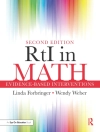‘The editors of Treating Young Veterans and the authors of the individual chapters [provide] practitioners with essential information about the needs, desires, and possibilities for veteransÖand their families. This book represents a thoughtful, sensitive, and sensible approach to working with military personnel and veterans who have been deployed to wars in the Persian Gulf, Iraq, and Afghanistan.’
From the Foreword by Peter B. Vaughan
Dean, Graduate School of Social Service
() Fordham University, New York, NY
Many veterans unsuccessfully attempt to self-manage their mental and physical health needs. This volume examines the multiple challenges awaiting the new generation of young veterans returning to civilian life, and provides strategies for mental health professionals to assist them in the process of readjustment. It incorporates multidisciplinary, state-of-the-art research to present practice and advocacy opportunities that facilitate a healthy and socially engaged reintegration into society for both traditional veterans (enlisted and career military personnel) and nontraditional veterans (reservists, national guardsmen, and women) aged 18 to 40 years.
The volume is divided into three sections: Assessment and Practice Approaches to Promote Resilience; Outreach and Practice With Special Communities, and Advocacy Practice to Promote Young Veterans’ Well-Being. Each section includes an introduction highlighting the chapters, and an epilogue delineating important steps in practice, outreach, and advocacy.
Key Features:
- Targets the specific needs of veterans of the Iraqi and Afghani conflicts
- Includes chapters on women and sexual trauma in the military and homeless combat veterans
- Addresses the special needs of children of veterans and the nature of ambiguous loss as ‘veteran-by-proxy, ‘ employment issues, and equity issues related to reservists
- Authored by recognized experts including military officers, attorneys, and Veterans Affairs administrators
- Designed for both general and scholarly readers
Mục lục
‘
Contributors
Foreword
Acknowledgments
Introduction: Today’s Young Veterans: Serving a Resilient Community
PART I: ASSESSMENT AND PRACTICE APPROACHES TOPROMOTE RESILIENCE
1. The Contextual Challenges for Young Veterans
2. Living Beyond the Intersection of War Theater and Home:Protective Factors for Healthy Reintegration
3. Trauma and the Developmental Course of PTSDPostdeployment
4. The Burden of Combat: Cognitive Dissonance in Iraq War Veterans
5. Veterans-by-Proxy: Amending Loss of Self Among the Childrenof Combat Veterans
PART II: OUTREACH AND PRACTICE WITH SPECIALIZED COMMUNITIES
6. Coming Home: Examining the Homecoming Experiences of Young Veterans
7. Beyond Words: Homeless Veterans Who Served in Iraq and Afghanistan
8. Tragedy, Loss, and Triumph After Combat: A Portrait of Young Women Veteran Survivors of Sexual and Combat Trauma
9. Living in Transition: Young Veterans’ Health and the Postdeployment Shift to Family Life
PART III: ADVOCACY PRACTICE TO PROMOTE YOUNG VETERANS’WELL-BEING
10. Ensuring Equality After the War for the National Guard and Reserve Forces: Revisiting The Yellow Ribbon Initiative
11. Managing the Return to the Workplace: Reservists Navigating the Stormy Seas of the Homeland
12. Veterans’ Courts and Criminal Responsibility: A Problem-Solving History and Approach to the Liminality of Combat Trauma
13. The First Responders’ Bridge to Protecting Veterans:A Social Worker’s Design on Street Reach
14. The 21st-Century Veteran and the 19th-Century Pension Code:Why the VA Claims Process Is a Steam Engine in an E-Universe
Epilogue: Meeting the Need and Respecting the Voice:Our Final Word
‘Giới thiệu về tác giả
David Gitelson, DSW, LCSW, is Director, Social Work Department, VA Hudson Valley Health Care System, Montrose, NY, Fellow of the New York Academy of Medicine, and Senior Adjunct Professor, Adelphi University, School of Social Work.












